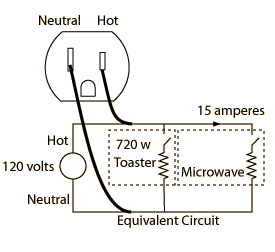Cellular infrastructures also lower installation costs, allowing utilities to configure meters remotely instead of having to dispatch skilled technicians on-site to millions of homes. With mobile operators seeking to capture their share of the growing M2M market, cellular data rates are more competitive than ever. From a deployment perspective, cellular is also fast. Using an existing, public wireless network instead of building one from scratch can cut months or years from a smart metering project timeline. Cellular networks extend virtually everywhere, covering 99 percent of the addressable population for smart metering, including remote areas.
Plenty of reasons exist to consider cellular technology. But what goes into a successful WWAN metering infrastructure? Any viable, cellular metering solution should provide:
• Reliability. Smart meters and their communications technologies should be able to stay online for 10, 15 or even 20 years without requiring components be replaced or need any on-site maintenance. Cellular metering solutions should, therefore, be built to industrial-grade specifications to meet extreme environmental conditions of shock, corrosion, temperature, vibration and humidity. For some applications, they also must meet Class I, Division 2 code standards to operate safely in hazardous environments.
• Remote configuration. During the 10- to 20-year life span of a smart meter, the communication module’s firmware likely will be upgraded, for example, to enhance security or comply with changing wireless standards. Utilities must be able to remotely manage, configure, test, validate and upgrade firmware over the air. Cellular solutions also should support patch upgrades so utilities don’t have to transmit the entire firmware package every time they make a minor update.
• Security. Cellular metering solutions must include strong authentication and encryption to protect consumer privacy and data integrity and maintain continuity of service. They should provide jamming detection to recognize deliberate network attacks. And they must be able to continue operating autonomously if they lose connectivity with the cellular network.
Satellite Systems
Satellite systems have broadband capabilities and tend to be reliable and ideal for long-range backhaul applications. Nevertheless, satellite systems are very costly to deploy and have monthly recurring costs. These costs add burdens to operating budgets.
Satellite systems can be deployed almost anywhere. They are, however, a nonprivate system with shared bandwidth. Plus, system maintenance—repairs in the event of an outage—are not in the control of the user. Only the system provider has access to rectify outage events, perform maintenance or add to system throughput with more infrastructures.
Cellular
 Cellular systems function similarly to satellite systems. They use an existing public network of communication infrastructure and devices that have monthly charges. Using a cellular network for distribution automation has several advantages. There is no need for the user to craft a tower infrastructure plan. For the most part, a technician turns on the cell modem and a link is created. The network design is far simpler than unlicensed or licensed radio systems.
Cellular systems function similarly to satellite systems. They use an existing public network of communication infrastructure and devices that have monthly charges. Using a cellular network for distribution automation has several advantages. There is no need for the user to craft a tower infrastructure plan. For the most part, a technician turns on the cell modem and a link is created. The network design is far simpler than unlicensed or licensed radio systems.Copper or Fiber (by comparison)
Distribution automation applications between distribution automation devices and substations and network operations centers can be far apart. Copper or fiber solutions can provide much more throughput, but these long distances often make either technology impractical because of cost and other issues such as right-of-way. If cost and right-of-way are not issues for the utility, these options, especially fiber, are compelling choices. No other technology discussed will provide speeds and reliability of fiber. (Electric Light & Power, Jul/Aug 2011, Electric Light & Power, Jul/Aug 2011)












































